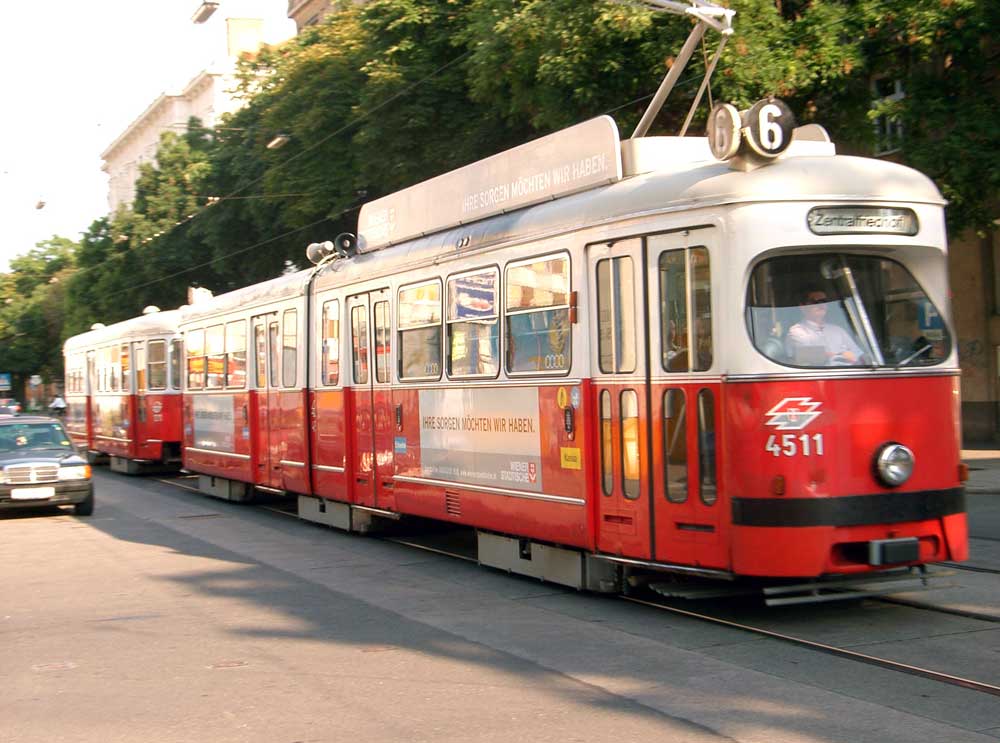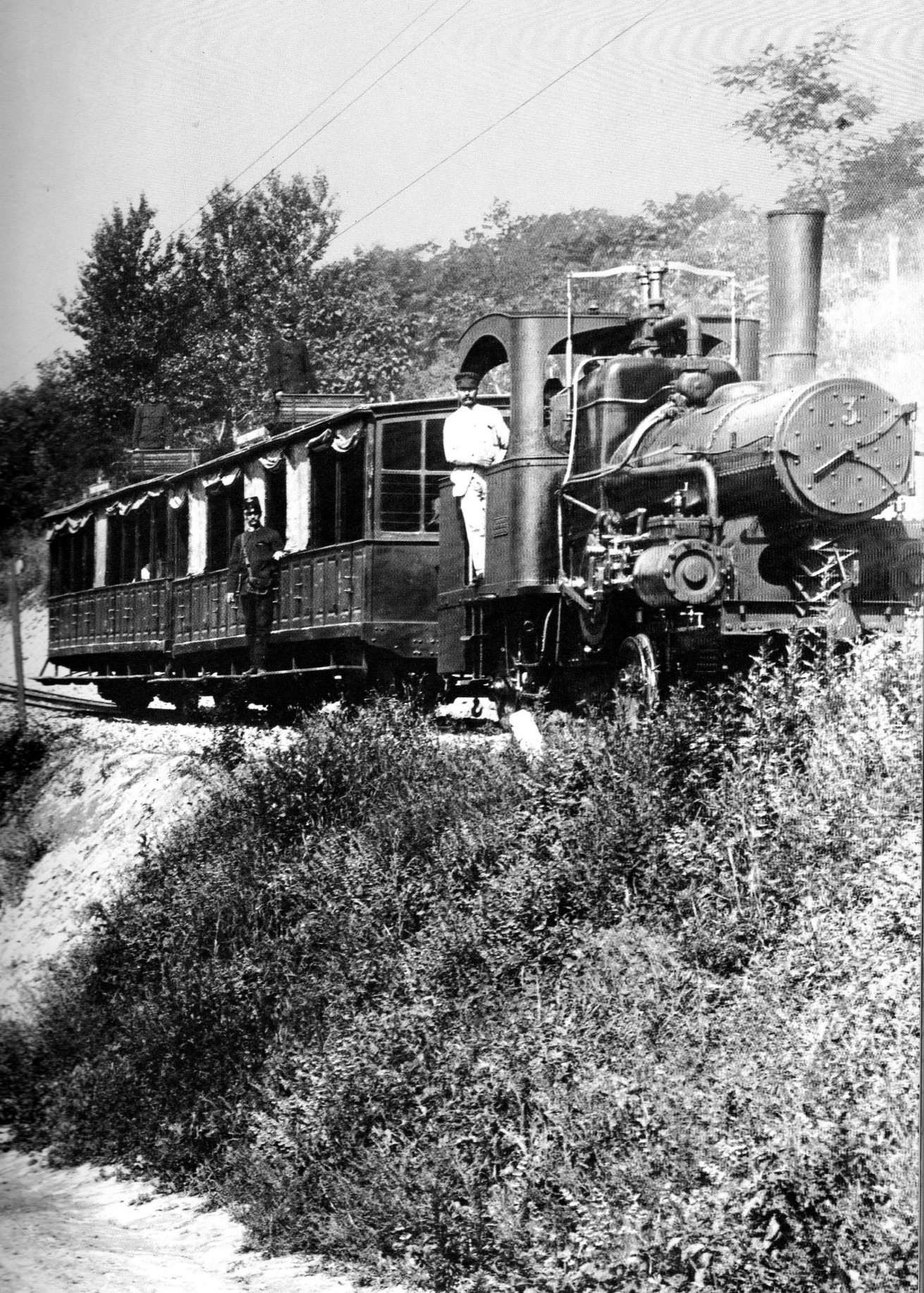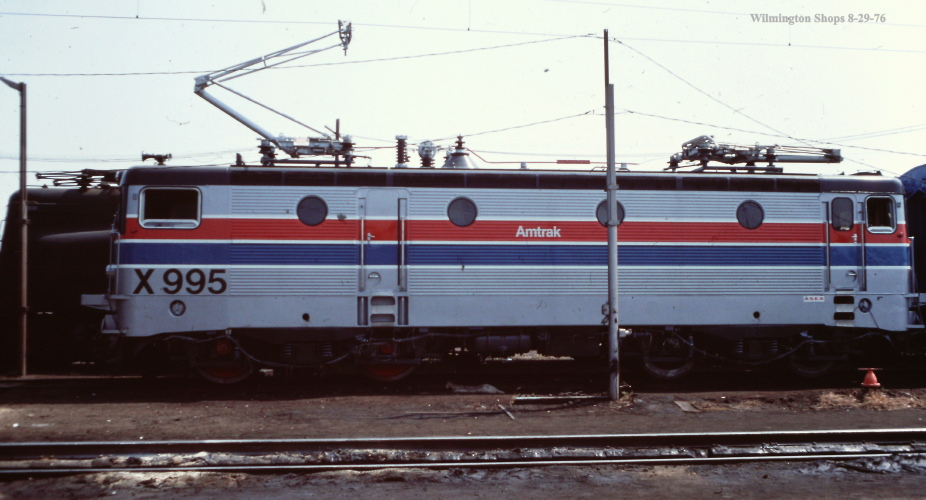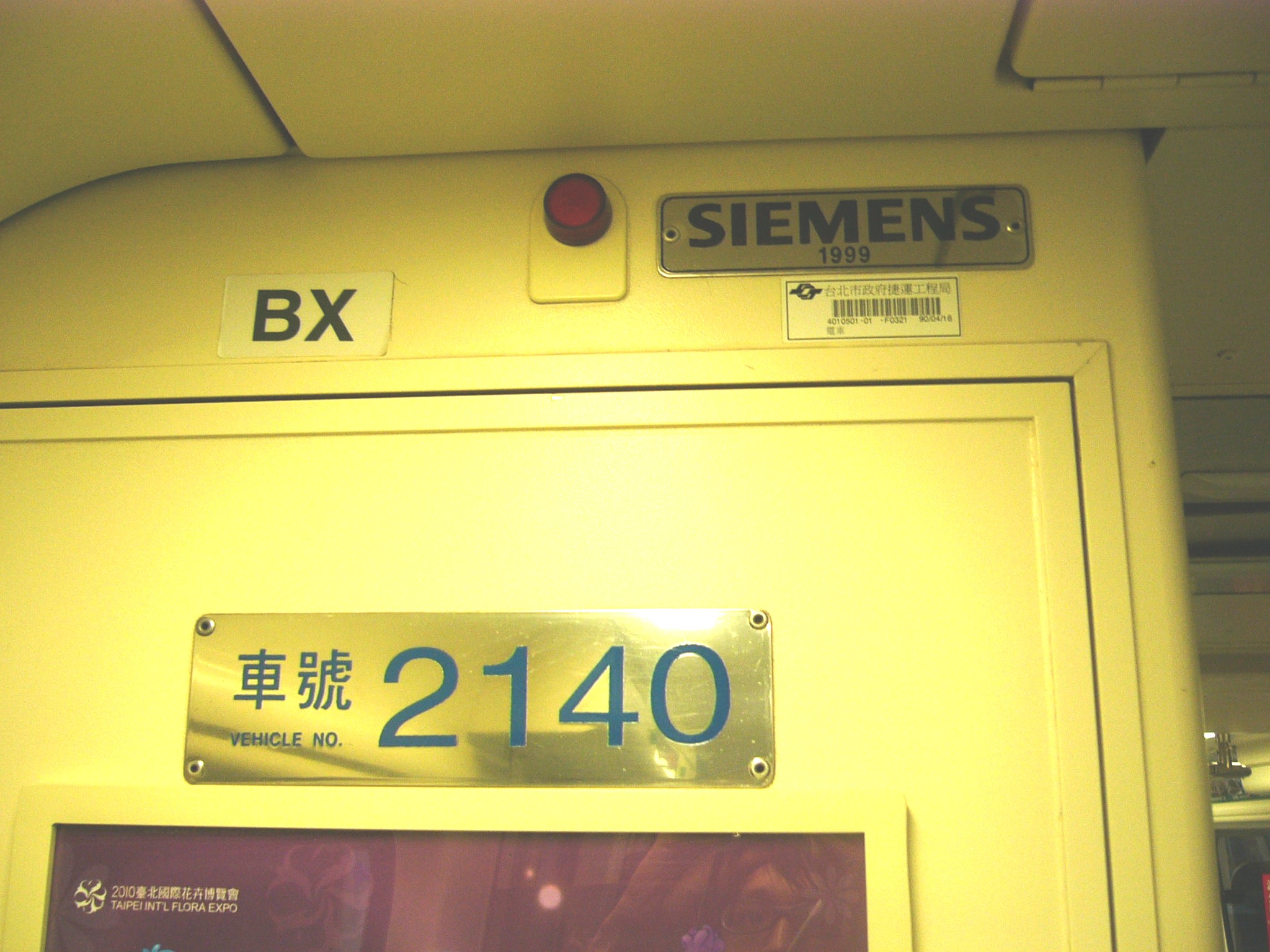|
Simmering-Graz-Pauker
Simmering-Graz-Pauker AG (SGP), founded as Simmering-Graz-Pauker AG für Maschinen-, Kessel- und Waggonbau, was an important Austrian machine and engine factory, manufacturing: machinery, boilers and rail vehicles. It was established in 1941 through the merger of Simmering machinery and rolling stock company with the Graz machine and rolling stock company and the Paukerwerkstraße Corporation from Vienna. History After World War II the company was majority owned by the state and had a wide network of international offices and subsidiaries in Asia, South America and Europe with several thousand employees. The company experienced rapid growth until the mid-1980s. SGP ceased to exist as an independent company in 1989 as part of the restructuring of the state-owned Österreichische Industrieholding (ÖIAG), when the former was renamed as ''SGP Verkehrstechnik GmbH''. In 1992, the Republic of Austria sold 26% of its shares in SGP to Siemens, and in 1993 another 48% of SGP's shares ... [...More Info...] [...Related Items...] OR: [Wikipedia] [Google] [Baidu] |
SGP M-222 Flamingo
The SGP M-222 Flamingo was an Austrian twin engine, four seat light aircraft, developed with a series of prototypes into the early 1960s. There was no series production. Design and development In the 1950s Simmering-Graz-Pauker A.G. (SGP) was a large manufacturing concern but the M-222 Flamingo was their first aircraft. It was a conventional twin engine monoplane, smaller than many but seating four in two rows. The wings of the Flamingo had a laminar flow airfoil and were made entirely of wood. The first prototype was powered by 150 hp (112 kW) Lycoming O-320 flat-four engines but later aircraft had 200 hp (150 kW) Lycoming IO-360 flat-fours. These were conventionally mounted ahead of the leading edge in long cowlings with their propeller shafts, driving two-blade airscrews, centred above the wing upper surface. There were fuel tanks in the thin wings, with more fuel in wing tip tanks. Unusually, the Flamingo was fitted with both flaps and airbrakes. The ... [...More Info...] [...Related Items...] OR: [Wikipedia] [Google] [Baidu] |
Diamond Aircraft Industries
Diamond Aircraft Industries is a Chinese-owned manufacturer of general aviation aircraft and motor gliders, based in Austria. It is the third largest manufacturer of aircraft for the general aviation sector, and has manufacturing facilities in Wiener Neustadt, Lower Austria, and in London, Ontario, Canada, as well as further production lines operated as joint ventures in other nations, such as China. The company was founded by Austrian aircraft designer Wolf Hoffmann in 1981, at which point it was known as ''Hoffmann Flugzeugbau''. Its first aircraft, a motor glider initially known as the HK36 Dimona, became a commercial success and led to improved models and further types of aircraft derived from it. Following several changes in ownership and naming, the company received the name ''Diamond Aircraft Industries'' in 1998. By this point, Diamond was producing a range of light aircraft, including the Dimona, the Diamond DA20, and the in-development Diamond DA40. In 2004, Diamon ... [...More Info...] [...Related Items...] OR: [Wikipedia] [Google] [Baidu] |
Budapest Cog-wheel Railway
The Budapest Cog-wheel Railway, is a rack railway in the Buda part of the Hungarian capital city of Budapest. It connects a lower terminus at , two tram stops away from the Széll Kálmán tér transport interchange, with an upper terminus at . The line is integrated into the city's public transport system as tram line number 60, is in length, and was opened in 1874. The railway is operated by BKV, who also operate the city's tram and metro lines. It runs throughout the year between the hours of 0500 and 2300. As a fully integrated part of Budapest's public transport system, standard tickets and passes can be used. The Városmajor terminus is adjacent to the Budapest tram stop of the same name, whilst the Széchenyihegy terminus is a walk from the similarly named terminus of the Budapest Children's Railway. History Since 1868 a horse tramway ran on schedule from the Lánchíd to set in operation by the ''Budai Közúti Vaspálya Társaság'' (~ Public Railway Society ... [...More Info...] [...Related Items...] OR: [Wikipedia] [Google] [Baidu] |
Simmering (Vienna)
Simmering (; Central Bavarian: ''Simmaring'') is the 11th district of Vienna, Austria (german: 11. Bezirk, Simmering). It borders the Danube and was established as a district in 1892. Simmering has several churches, some museums, schools, old castles, and four cemeteries, one of them being the Wiener Zentralfriedhof, one of the largest cemeteries of Europe. History The first indications of the settlement ''Simmering'' are from 1028. A brewery was built in 1605 and continued to bring in revenue for the area for more than 300 years. Simmering remained small until 1860, when the ''Rinnböckhäuser'' housing development was built, which at the time was the second-largest in Vienna, and resulted in rapid growth in the area. ''Kaiserebersdorf'' (earlier known as ''Ebersdorf'') was one of the original villages in the district and held the residence of the ''Ebendorfer'' dynasty. Holy Roman Emperor Maximilian II hunted frequently in the area and converted the residence into the huntin ... [...More Info...] [...Related Items...] OR: [Wikipedia] [Google] [Baidu] |
Siemens C651
The Siemens C651 is the second generation electric multiple unit rolling stock in operation on the North South and East West lines of Singapore's Mass Rapid Transit (MRT) system, manufactured by Siemens (SIE) under Contract 651. A total of 114 cars consisting of 19 train-sets were purchased in 1992 and introduced into service from 1995 onwards. These trains were built by Siemens in Austria. Design Initial design The trains have a full white body and a thick red stripe in the middle. Similar to the Kawasaki Heavy Industries C151 trains, the Siemens C651 trains have no visual passenger information systems but have a built-in audio announcement system until STARiS was installed and activated around 2010. Unlike the 66 first generation Kawasaki Heavy Industries C151 train sets, the C651s are delivered with a scratch-resistant acrylic finish. This alleviated the difficulty of removing dirt trapped on the exterior surface, as opposed to the aluminium finish of the C151 trains t ... [...More Info...] [...Related Items...] OR: [Wikipedia] [Google] [Baidu] |
EMD AEM-7
The EMD AEM-7 is a twin-cab four-axle B-B electric locomotive built by Electro-Motive Division (EMD) and ASEA between 1978 and 1988. The locomotive is a derivative of the Swedish SJ Rc4 designed for passenger service in the United States. The primary customer was Amtrak, which bought 54 for use on the Northeast Corridor and Keystone Corridor. Two commuter operators, MARC and SEPTA, also purchased locomotives, for a total of 65. Amtrak ordered the AEM-7 after the failure of the GE E60 locomotive. The first locomotives entered service in 1980 and were an immediate success, ending a decade of uncertainty on the Northeast Corridor. In the late 1990s, Amtrak rebuilt 29 of its locomotives from DC to AC traction. The locomotives continued operating through the arrival of the final Siemens ACS-64 in June 2016. MARC retired its fleet in April 2017 in favor of Siemens Chargers, and SEPTA retired all seven of its AEM-7s in November 2018 in favor of ACS-64s. Background Amtrak assumed ... [...More Info...] [...Related Items...] OR: [Wikipedia] [Google] [Baidu] |
Defunct Locomotive Manufacturers Of Austria
{{Disambiguation ...
Defunct (no longer in use or active) may refer to: * ''Defunct'' (video game), 2014 * Zombie process or defunct process, in Unix-like operating systems See also * * :Former entities * End-of-life product * Obsolescence Obsolescence is the state of being which occurs when an object, service, or practice is no longer maintained or required even though it may still be in good working order. It usually happens when something that is more efficient or less risky r ... [...More Info...] [...Related Items...] OR: [Wikipedia] [Google] [Baidu] |
Electric Vehicle Manufacturers Of Austria
Electricity is the set of physical phenomena associated with the presence and motion of matter that has a property of electric charge. Electricity is related to magnetism, both being part of the phenomenon of electromagnetism, as described by Maxwell's equations. Various common phenomena are related to electricity, including lightning, static electricity, electric heating, electric discharges and many others. The presence of an electric charge, which can be either positive or negative, produces an electric field. The movement of electric charges is an electric current and produces a magnetic field. When a charge is placed in a location with a non-zero electric field, a force will act on it. The magnitude of this force is given by Coulomb's law. If the charge moves, the electric field would be doing work on the electric charge. Thus we can speak of electric potential at a certain point in space, which is equal to the work done by an external agent in carrying a unit of ... [...More Info...] [...Related Items...] OR: [Wikipedia] [Google] [Baidu] |
Flight International
''Flight International'' is a monthly magazine focused on aerospace. Published in the United Kingdom and founded in 1909 as "A Journal devoted to the Interests, Practice, and Progress of Aerial Locomotion and Transport", it is the world's oldest continuously published aviation news magazine. ''Flight International'' is published by DVV Media Group. Competitors include Jane's Information Group and ''Aviation Week''. Former editors of, and contributors include H. F. King, Bill Gunston, John W. R. Taylor and David Learmount. History The founder and first editor of ''Flight'' was Stanley Spooner. He was also the creator and editor of ''The Automotor Journal'', originally titled ''The Automotor Journal and Horseless Vehicle''.Guide To British Industrial History: Biographies: ''Stan ... [...More Info...] [...Related Items...] OR: [Wikipedia] [Google] [Baidu] |
Mass Rapid Transit (Singapore)
The Mass Rapid Transit system, locally known by the initialism MRT, is a rapid transit system in Singapore and the island country's principal mode of railway transportation. The system commenced operations in November 1987 after two decades of planning with an initial stretch consisting of five stations. The network has since grown to span the length and breadth of the country's main island – with the exception of the forested core and the rural northwestern region – in accordance with Singapore's aim of developing a comprehensive rail network as the backbone of the country's public transportation system,Singapore's heavy rail network is composed of three distinct systems. Two of the three are rapid transit networks, chiefly a) the MRT system, which falls entirely within the city-state and forms the core of the network, and b) the two-station cross-border Johor Bahru–Singapore rapid transit system (RTS), linked to the mainline MRT and due to commence operations in end- ... [...More Info...] [...Related Items...] OR: [Wikipedia] [Google] [Baidu] |
Taipei Metro C341
The Taipei Metro C341 is the third generation of electric multiple units on the Taipei Metro in Taipei, Taiwan. Built by Siemens Mobility in Austria, it was introduced on the Bannan line in 2004. History The C341 stands out among other Taipei Metro trains for not being directly procured by the Department of Rapid Transit Systems (DORTS) but rather by Continental Engineering Corporation, the project contractor of the Tucheng Line. Continental Engineering initially intended to procure the new trains from KOROS (now Hyundai Rotem) of South Korea but this proposal was rejected by DORTS. Hence, Continental Engineering purchased six new six-car trainsets from Siemens, the supplier of the earlier C321 trains, at NT$ 2,248 million; the price per car for the C341 was hence 1.5 times more than that for the C321, which were directly procured by DORTS. The C341 trains were handed over to DORTS from mid-September to mid-November 2004 and began operations on the Bannan Line in January 2005. ... [...More Info...] [...Related Items...] OR: [Wikipedia] [Google] [Baidu] |
Taipei Metro C321
The Taipei Metro C321 is the second generation of heavy-capacity rolling stock used on the Taipei Metro in Taipei, Taiwan. Built by Siemens Mobility in Germany, it was introduced on the Bannan line in 1999. History Siemens won a contract to build the second batch of 216 cars for the Taipei Metro in 1993. Siemens in turn subcontracted part of the contract to Union Carriage & Wagon of South Africa, which became a focal point of controversy for the Union Rail Car partnership (the builder of the earlier Taipei Metro C301, C301 trains) and the United States government, the latter which accused the South African government of subsidising the Siemens bid; Union Carriage & Wagon in return denied any government involvement in the bid. The United States government sought to convince Taipei to reverse the contract award to Siemens but was presumably unsuccessful. Exterior The train design was based on the Siemens Modular Metro, Modular Metro, while the exterior and interior dimensions and con ... [...More Info...] [...Related Items...] OR: [Wikipedia] [Google] [Baidu] |





